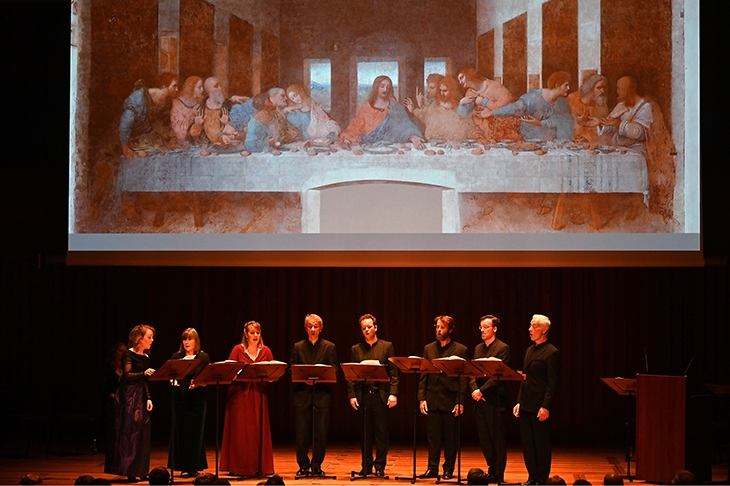We’ve all read the article. It does the rounds with the dispiriting regularity of an unwanted dish on a sushi train. Classical concerts are dying and if they are to survive they need to evolve, to innovate, to banish (variously) seating, silence, dress codes (for musicians), dress codes (for audience), programme notes, formal venues… But among so much institutional hand-wringing and professional self-loathing I’d like to take a moment to celebrate one classical tribe getting innovation exactly right: period music groups.
Theirs is a repertoire with a natural advantage; it belongs to an age in which music was still soundtrack rather than event — an inevitable accompaniment to drinking or dying, dancing, seducing, warring or worshipping, integrated into the essential business of life. All of which means not just more relaxed forms and formats, but smaller, adaptable forces — the kind of groups you could hide in a priest hole, hire to serenade your mistress, or relocate to a gallery, a living room, a warehouse. It’s music that moulds itself to your needs, not the other way around.
And period musicians have taken this idea and run with it. Whether it’s Red Byrd brushing polyphony clean of Oxbridge affectation, Bjarte Eike’s barnstorming Alehouse Sessions, Bach’s St Matthew Passion performed with the homeless in Manchester’s Campfield Market or the startling musical collisions and conversations of London’s Baroque at the Edge festival, this is a genre finding its audience not by watering down but by doubling down — being utterly, unapologetically itself, whether irreverent or outright intellectual, authentic in the only sense that matters.
Robert Hollingworth’s vocal group I Fagiolini have been teaching us this particular trick for decades, and they’re not done yet. Their latest project, launched this week on CD and in concert, goes by the cumbersome title Leonardo da Vinci: Shaping the Invisible, but takes an agile, offbeat approach to the Da Vinci anniversary. Hollingworth and art historian Martin Kemp have matched individual paintings, sketches and diagrams by the artist with music from seven centuries (not for this group a predictable ‘Music From Leonardo’s Italy’ programme), creating a project that’s part-lecture-recital, part-meditation, part-conversation, and totally captivating.
We get some straight connections: the controversially restored ‘Salvator Mundi’ finds its soft-focus radiance echoed in the gauzy sfumato of Herbert Howells’s setting of that text.The mathematical proportions of ‘The Vitruvian Man’ are paired with those from Bach’s The Art of Fugue, delivered wordlessly, Swingles-style. It’s neat and clever, but the recital really opens up when the narrative becomes looser, more playfully associative.
The painted folds in a Madonna’s skirt suggest the flowing, interwoven lines of Victoria’s double-choir Alma Redemptoris Mater, while a trio of grotesques give us the exuberant, self-parodying ugliness of Vecchi’s musical comedy L’Amfiparnaso. Best of all is the leap from the unsettling eroticism of Leonardo’s ‘St John the Baptist’ to 20th-century French composer Daniel-Lesur’s ravishing Song of Songs settings, sudden cries of ‘Shema!’ shivering across the lush polyphonic landscape.
The group are musical shapeshifters to a man, following Hollingworth’s giddy, eclectic imagination wherever it leads, disarming with self-deprecation and silliness before devastating you with beauty. This is serious musicianship that never takes itself too seriously — the Holy Grail of concert-going.
If I Fagiolini prefer to climb in through the side window of the traditional classical concert, then John Eliot Gardiner and his Monteverdi Choir & English Baroque Soloists process in full regalia through the front door. Theirs is the shock-and-awe of excellence, proving first in 2017’s cycle of Monteverdi operas and now with their European tour of Handel’s Semele that the concert hall is far from the poor cousin of the opera house.
Where so many promoters are helping the medicine of classical music down with sugary projections or props, Gardiner trusts the works he presents to be enough. The musicians themselves are front and centre here, just as they were in the Monteverdi operas. Yes, there’s an unobtrusive ‘concert staging’ by Thomas Guthrie happening around the edges, but it’s Handel’s score that steals the show, helped along by outrageously fine chorus singing (the kind of spontaneous unanimity that comes only from lengthy and meticulous rehearsal) and orchestral playing that bursts crisp in the ear in the dry, bright acoustic of the newly restored Alexandra Palace Theatre.
Marketing that has this as ‘Handel’s sexiest opera’ might be stretching a point. Congreve’s chastity belt of a libretto is enough to keep things PG, but there’s plenty of sly eroticism to be found in the priapic virtuosity of this performance.
Hugo Hymas may be a softer, slighter-voiced Jupiter than normal, but who could resist his blooming loveliness of tone, or the musicality with which he deploys it to woo Louise Alder’s Semele — nimble, radiant and just a tiny bit vulgar, before finding unexpected tragedy in death. Handel promises us ‘endless pleasure’ and Gardiner delivers it by the silken armful, with not an immersive concept or digital deconstruction in sight.






Comments